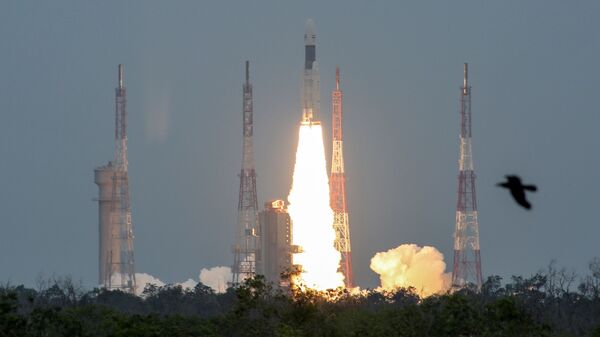As the craft inched towards the Earth’s natural satellite, the camera on board the Vikram Lander captured the Lunar surface from an altitude of 2,650 kilometres on Wednesday (21st August). The space agency has identified the Mare Orientale basin and Apollo craters on the surface.
Take a look at the first Moon image captured by #Chandrayaan2 #VikramLander taken at a height of about 2650 km from Lunar surface on August 21, 2019.
— ISRO (@isro) August 22, 2019
Mare Orientale basin and Apollo craters are identified in the picture.#ISRO pic.twitter.com/ZEoLnSlATQ
Chandrayaan2, the most ambitious Indian space mission to date, crossed a significant milestone on Tuesday (20th August) by entering Lunar Orbit.
The ‘Vikram’ Lander will separate from the ‘Pragyan’ Rover as it enters its final orbit, passing over the lunar poles at a distance of about 100 kilometres from the surface. This will be followed by a series of complex breaking manoeuvre to soft land the 6-wheeled robotic vehicle in a high plain between two craters in the South Polar Region at a latitude of about 70 degrees south.
“The final descent of the Lander will be 15 terrifying moments for us, as it is something we have never tried before. It is one of the most complex operations we have ever handled,” said ISRO Chairman Dr. K. Sivan on Tuesday. “On the whole, such a mission's management itself is new to us.”
Dr. Sivan said, since ISRO would be studying the mineral composition of the subsurface, the emerging scientific data would help future lunar probes, including NASA’s Artemis programme, which would see the “first woman and the next man” walking on the lunar surface.
The lunar South Pole is especially interesting because the area there remains in shadows and is much larger than its North Pole. The possibility of the presence of water there is very high and the cold traps in craters could contain a fossil record of the early Solar System. India’s first Lunar Mission in 2008 had identified traces of water on moon.
Chandrayaan2, with all its domestic payloads, was launched on 22 July from ISRO’s spaceport on the eastern seacoast of Sriharikota in Andhra Pradesh.



